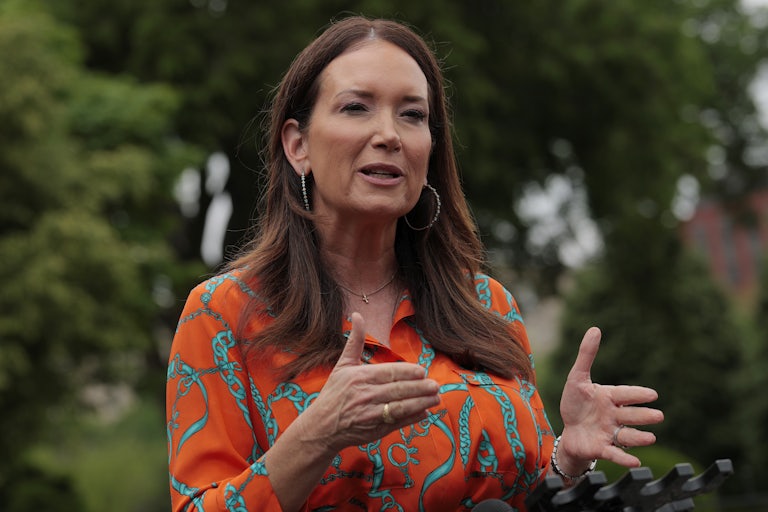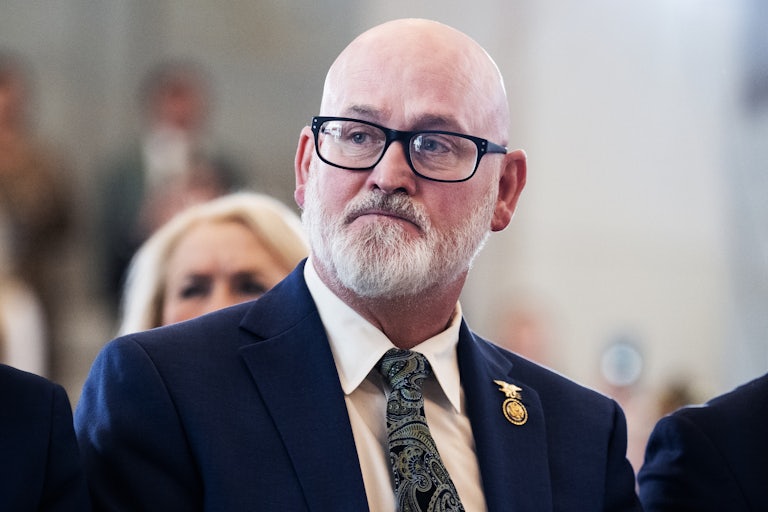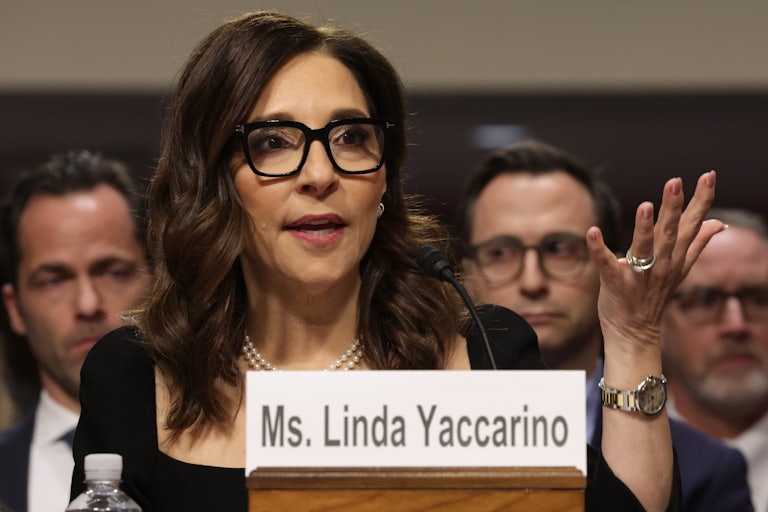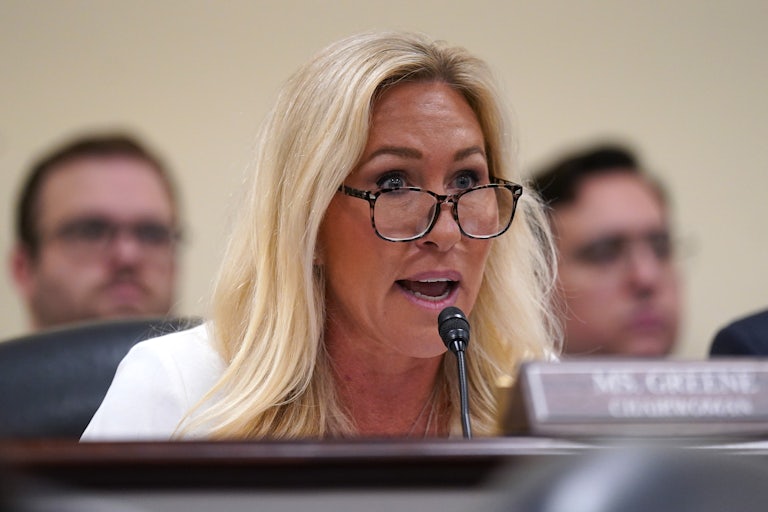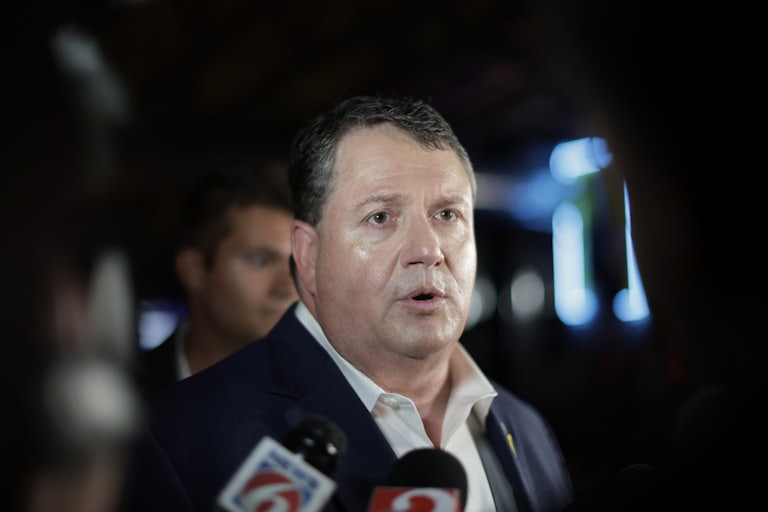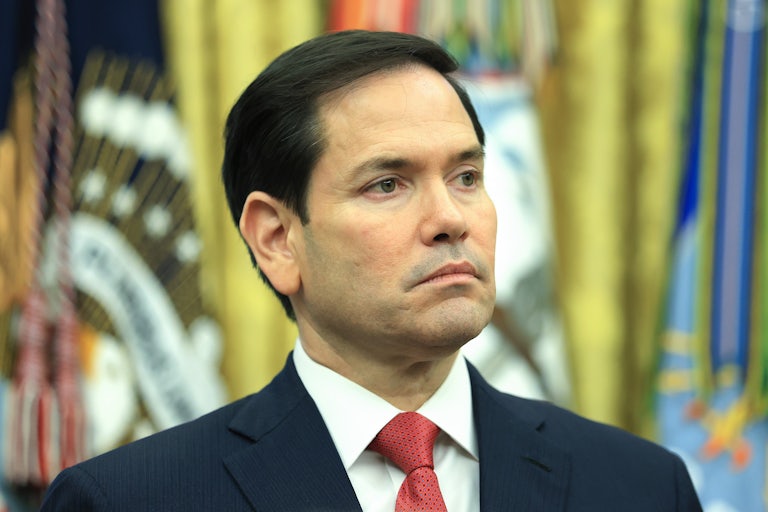Trump’s Commerce Secretary Will Get Rich Off These Budget Cuts
Howard Lutnick has ties to companies that gather weather data.
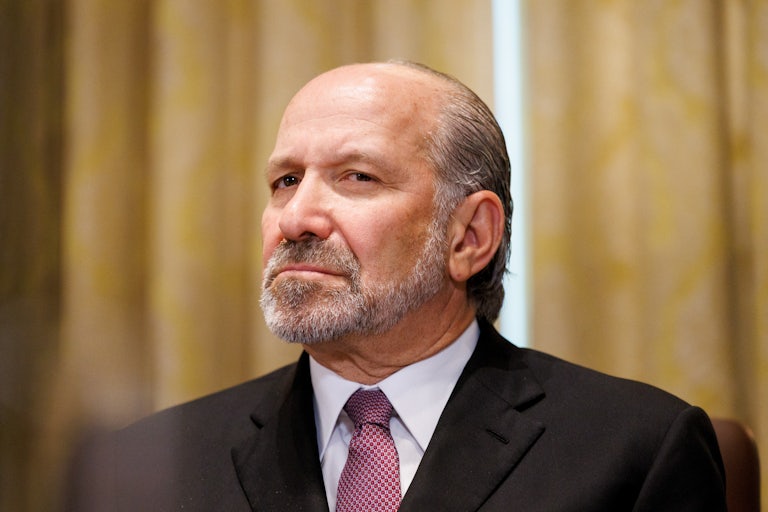
At least one person in the Trump administration stands to make a fortune at the National Weather Service’s deathbed.
Commerce Secretary Howard Lutnick oversees the National Oceanic and Atmospheric Administration and its subsidiary, the National Weather Service. But until recently, he also ran a financial firm, Cantor Fitzgerald (which he placed under the stewardship of his two twentysomething sons), that invests in companies vying to replace the weather agencies’ labor.
Cantor owns a controlling interest in BGC Group, which created a weather derivatives desk in 2023 to analyze its clients’ climate-related financial exposure. Cantor is also invested in a satellite company that photographs natural disasters and weather events in real time. Lutnick is especially close to that project—he helped the company go public in 2022.
Lutnick’s most recent ethics filing revealed that he is still in the process of selling off his shares in the company. Securities and Exchange Commission filings obtained by the Associated Press indicate that Lutnick’s stakes aren’t going far—instead, he’s been transferring them to one of his sons.
Lutnick isn’t the only one with outside interests in nixing the agency. Donald Trump’s pick to run NOAA, Neil Jacobs, has been an enthusiastic advocate for privatizing the department’s work. He was previously employed by Panasonic Weather Solutions, one such company collecting weather data. And Trump’s nominee for another NOAA post, Taylor Jordan, is a K-Street lobbyist “with a roster of weather-related clients,” according to the Associated Press.
Trump has been attacking the country’s public weather-monitoring systems since he was on the campaign trail, promising to dismantle NOAA since Hurricane Helene devastated the South.
In February, then-DOGE chief Elon Musk sized down NOAA’s Office of Space Commerce, which is responsible for imposing regulations on two of Musk’s largest assets: SpaceX and Starlink. Musk laid off a third of the office’s staff.
Two months later, the administration proposed formal plans to eviscerate the rest of NOAA’s budget. In internal documents obtained by CNN, the White House claimed that the agency’s myriad weather-related programs were “misaligned with the … expressed will of the American people.”
Nixing NOAA was the brainchild of Project 2025. On page 664, the Christian nationalist manifesto argued that the agency “should be dismantled and many of its functions eliminated, sent to other agencies, privatized, or placed under the control of states and territories.”
But losing NOAA and its federally funded research would have immediate ramifications for the average American. It would effectively privatize weather forecasts, forcing U.S. citizens to pay for weather subscriptions to replace what currently feels commonplace, for instance national weather alert systems for emergencies such as flash flooding, tornadoes, extreme heat, and earthquakes.
The White House’s machinations against the weather agency have come under increased scrutiny since Texas faltered in notifying Kerr County residents of an oncoming flash flood over the weekend. It’s unclear if federal cuts played a role in how local and state authorities responded to the event, but the communication failure produced one of the deadliest natural disasters in U.S. history, killing at least 119 people across central Texas, with 173 people still missing.
“The Weather Service did a good job with the information you had here. I don’t think the staffing cuts contributed to this,” Andy Hazelton, one of the recently laid-off NOAA climate scientists, told the BBC. “But this is the kind of event we can see more of if the cuts to NOAA continue, if you make the models worse or have the staffing levels lower.”
Permanently ending access to public weather notifications could be the beginning of many more disasters down the line, as Americans would be cornered into paying for another subscription or unknowingly putting themselves at risk.
“It’s the most insidious aspect of this: Are we really talking about making weather products available only to those who can afford it?” Rick Spinrad, a former NOAA administrator under President Joe Biden, told the Associated Press. “Basically turning the weather service into a subscription streaming service? As a taxpayer, I don’t want to be in the position of saying, ‘I get a better weather forecast because I’m willing to pay for it.’”
